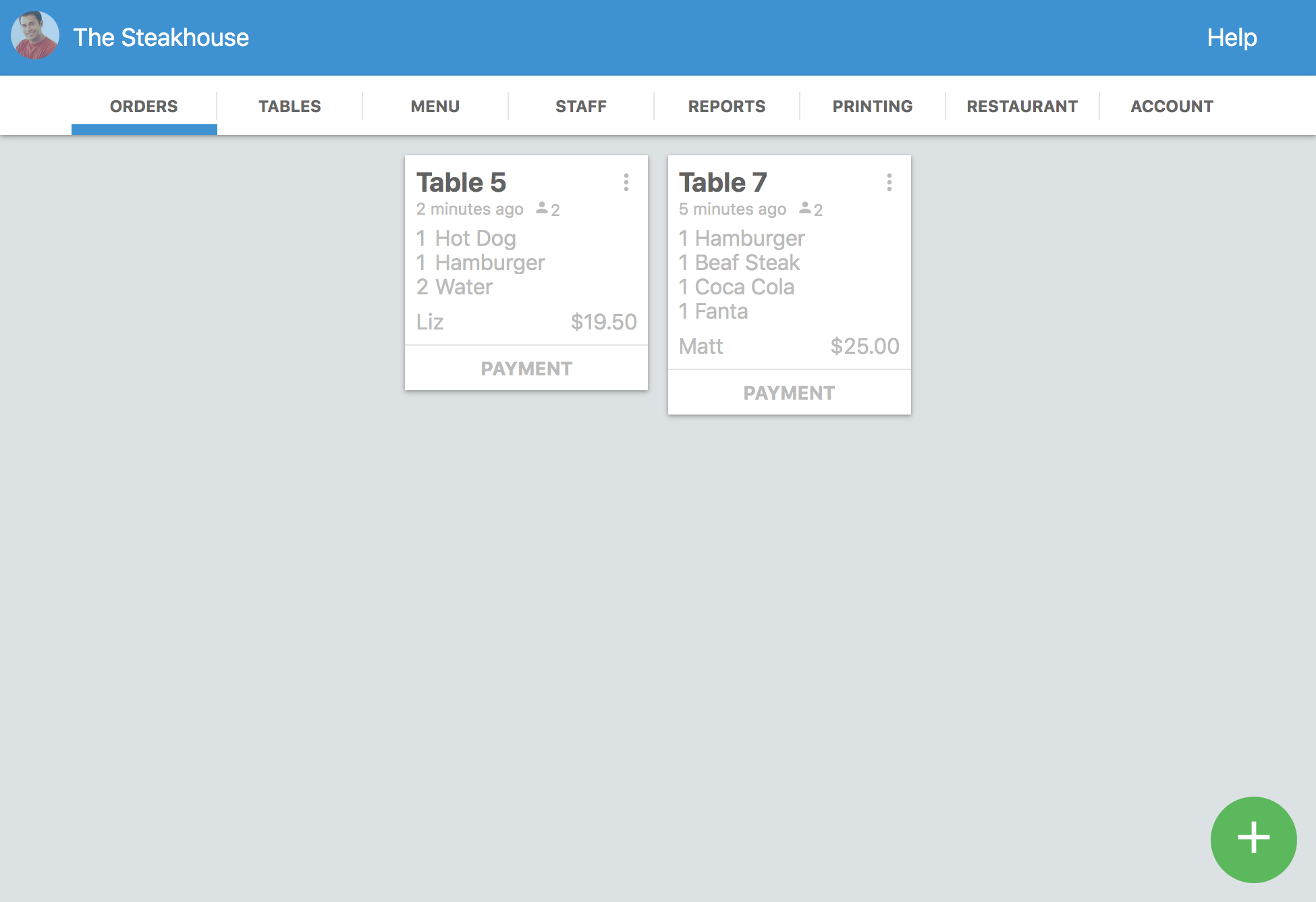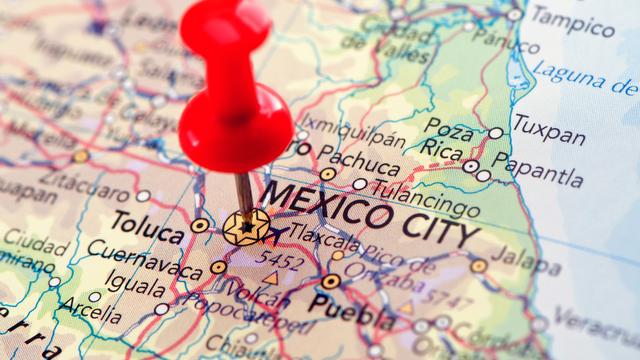In this blog, we’ve talked about several marketing strategies you can apply in your restaurant. We have covered just about everything. Still, one of the strategies we haven’t explored deeply is the same one we’re applying – blogging as a form of content marketing. Blogging and content marketing have been the bread and butter of our marketing strategies for quite some time now. And, if you’re reading this article or if you have seen a video about it, that means it’s working. In this article, we’ll discuss the following topics:
- Blogging as an effective form of content marketing
- How your restaurant benefits from it
- The steps you must follow to create an effective blog
- And more tips you can use to maximize the results of this strategy
When you finish reading this article, you’ll have a deep understanding of the benefits of applying this strategy for your business, as well as the necessary tools to do so effectively. Let’s get started!
What Are Blogging and Content Marketing and How Do They Help Restaurants?
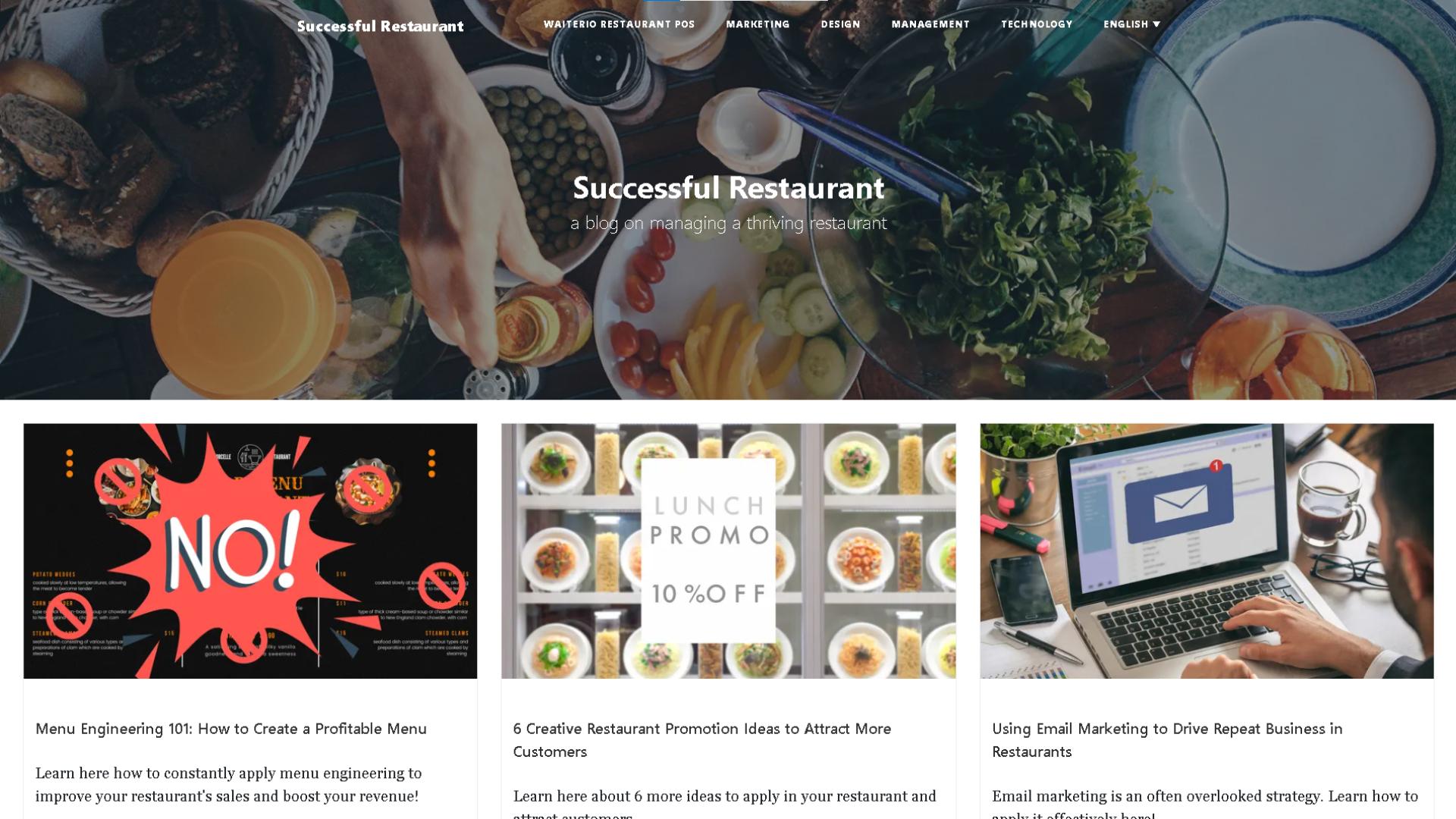
Let’s first start by defining content marketing. Briefly, content marketing is a type of marketing strategy that specializes in providing valuable content to a specific audience. Its main goal is to attract potential customers, improve brand awareness, and gain leads that can later become customers. Blogging is a form of content marketing based specifically on publishing articles or blogs to achieve those goals. Blogs are typically written in a conversational style and can cover a wide range of topics, including personal opinions, news, and industry insights. Blogging, as a marketing tool, is mostly used by other types of businesses, but that doesn’t mean restaurants can’t benefit from using it. Here are a few of the benefits of incorporating it into your marketing efforts:
- Increased brand awareness: Blogging can help restaurants increase brand awareness by reaching a new audience and positioning the restaurant as an expert in the industry. At the very least, it can make the restaurant be associated with an interesting read locally.
- Improved search engine ranking (SEO): Blogging can help to improve a restaurant's SEO by providing fresh, relevant content that is indexed by search engines. This can help the restaurant rank higher in search results for relevant keywords, leading to more traffic to the restaurant's website. This is especially useful if you have an online ordering system and if you achieve ranking higher for local searches. Check out our article about how to optimize your website for local SEO.
- More leads and sales: Blogging can help generate more leads and sales for restaurants by providing valuable information to potential customers and encouraging them to visit the restaurant or make a purchase.
- Improved customer engagement: Blogging can help to improve customer engagement by providing a platform for restaurants to communicate with their customers and build relationships with them.
- You can repurpose the content easily: Creating original content is hard. But if you manage to do so for a blog, you can repurpose it for other types of content like videos and social media posts. Repurposed content reaches more people while reducing the cost of creating it.
Finally, blogging is a very versatile tool because it pairs easily with other marketing tools and strategies that can enhance its benefits – we’ll talk more about that below.
Examples of Restaurants Using Content Marketing and Blogs Effectively
If you’re not convinced, I’ll give you a few examples of restaurants using this strategy effectively:
1. McDonald's
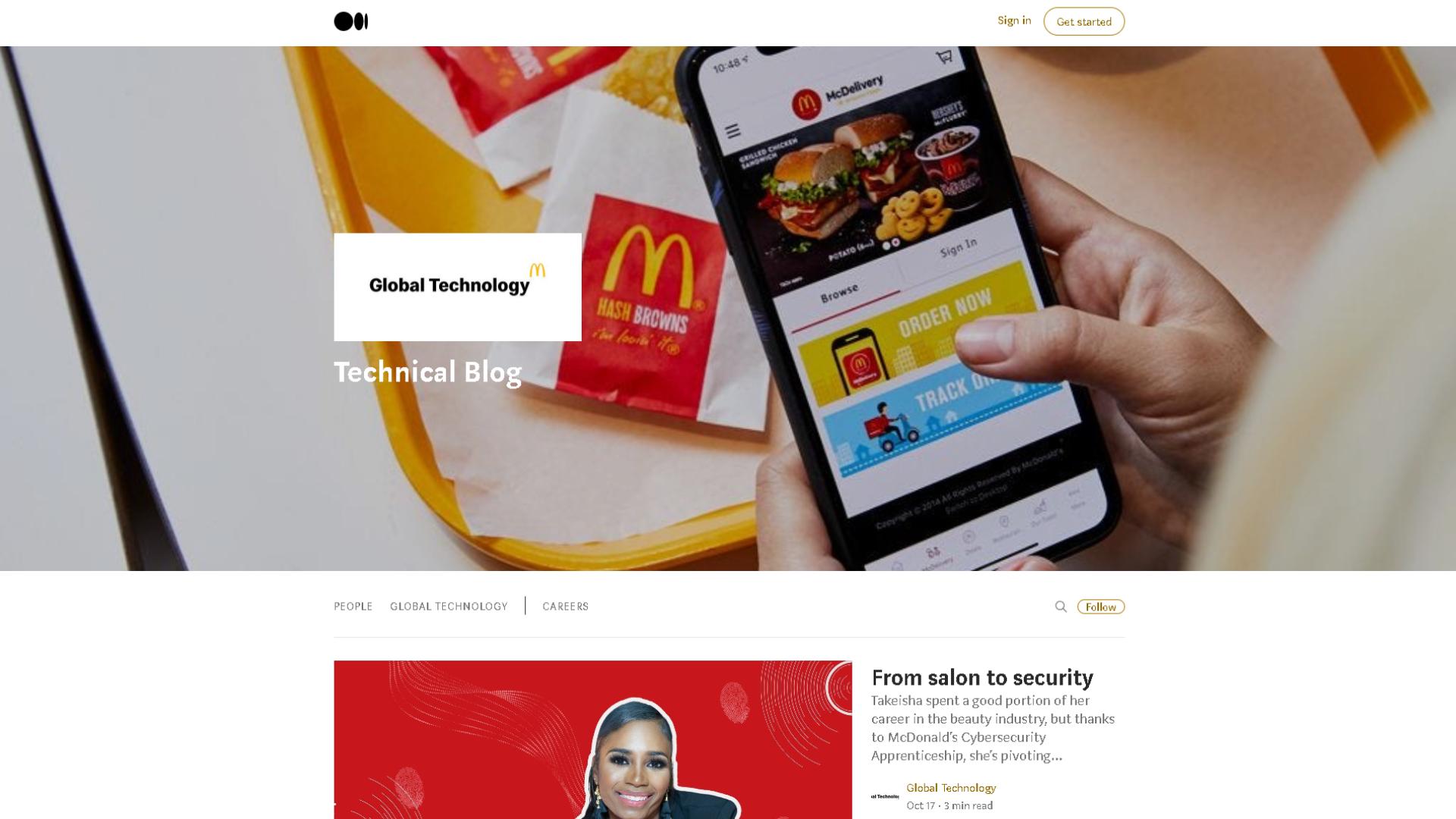
McDonald's uses blogging in several ways, mostly because the company has several blogs, which include a Medium “Technical Blog”, a “Corporate McDonald’s” blog, and even blogs for different countries, such as McDonald’s India. Each blog posts about different topics – from comprehensive case studies to community posts, and even simpler posts about new deals. This all-encompassing strategy allows McDonald’s to attract customers, new employees, and even potential new franchisees.
2. Wendy's
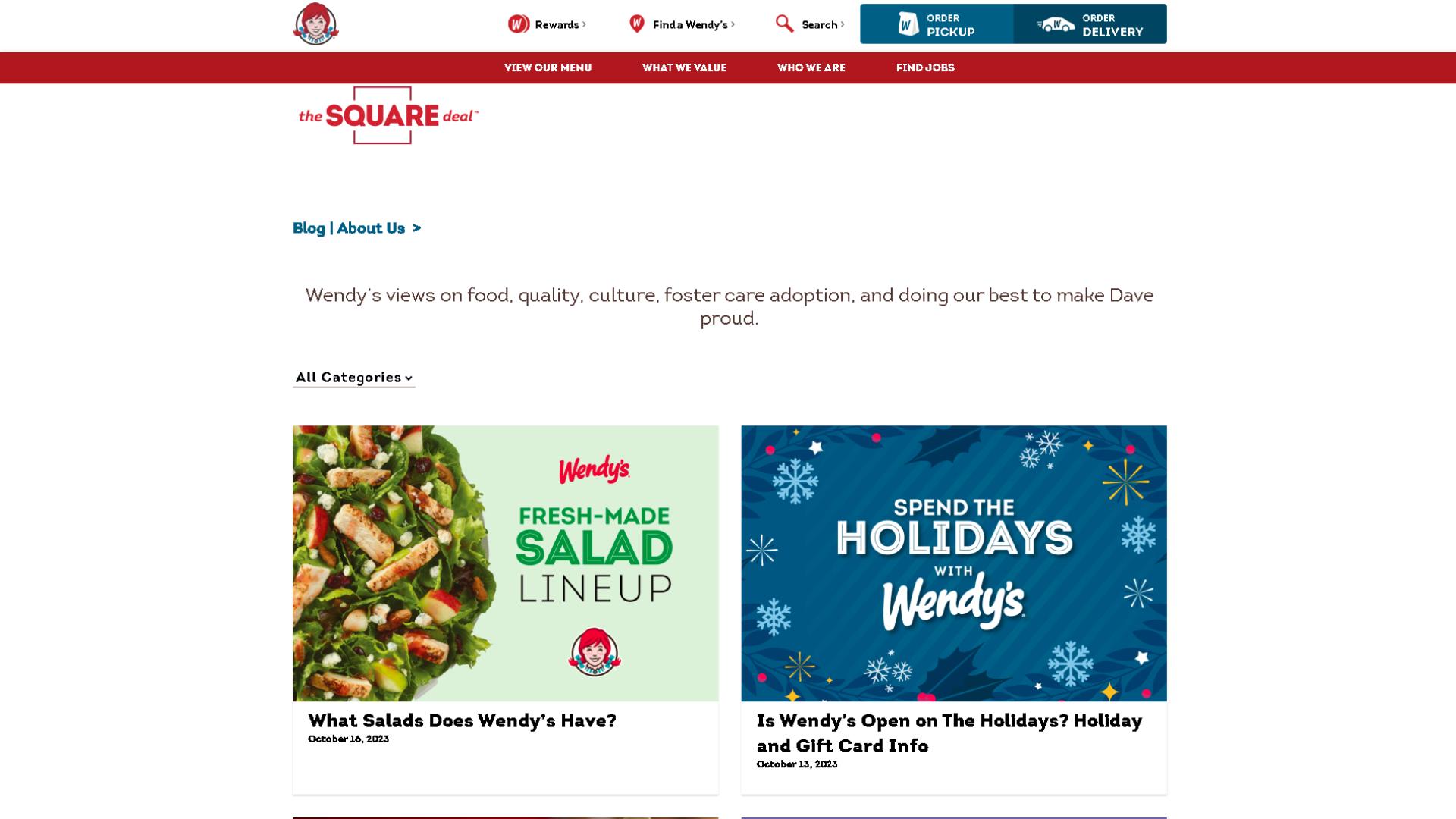
Wendy's is known for its humorous and unconventional social media presence. The company's blog reflects this tone. The blog features articles on a variety of topics, including:
- Product reviews
- Social commentary
- Pop culture references
- Behind-the-scenes looks at Wendy's operations
- Future company projects
- And even reposts of their social media interactions, like unconventional TikTok posts
Wendy's blog is popular with its target audience of millennials and Gen Z consumers. The company uses its blog to build relationships with its customers and to position itself as a fun and relatable brand.
3. Starbucks
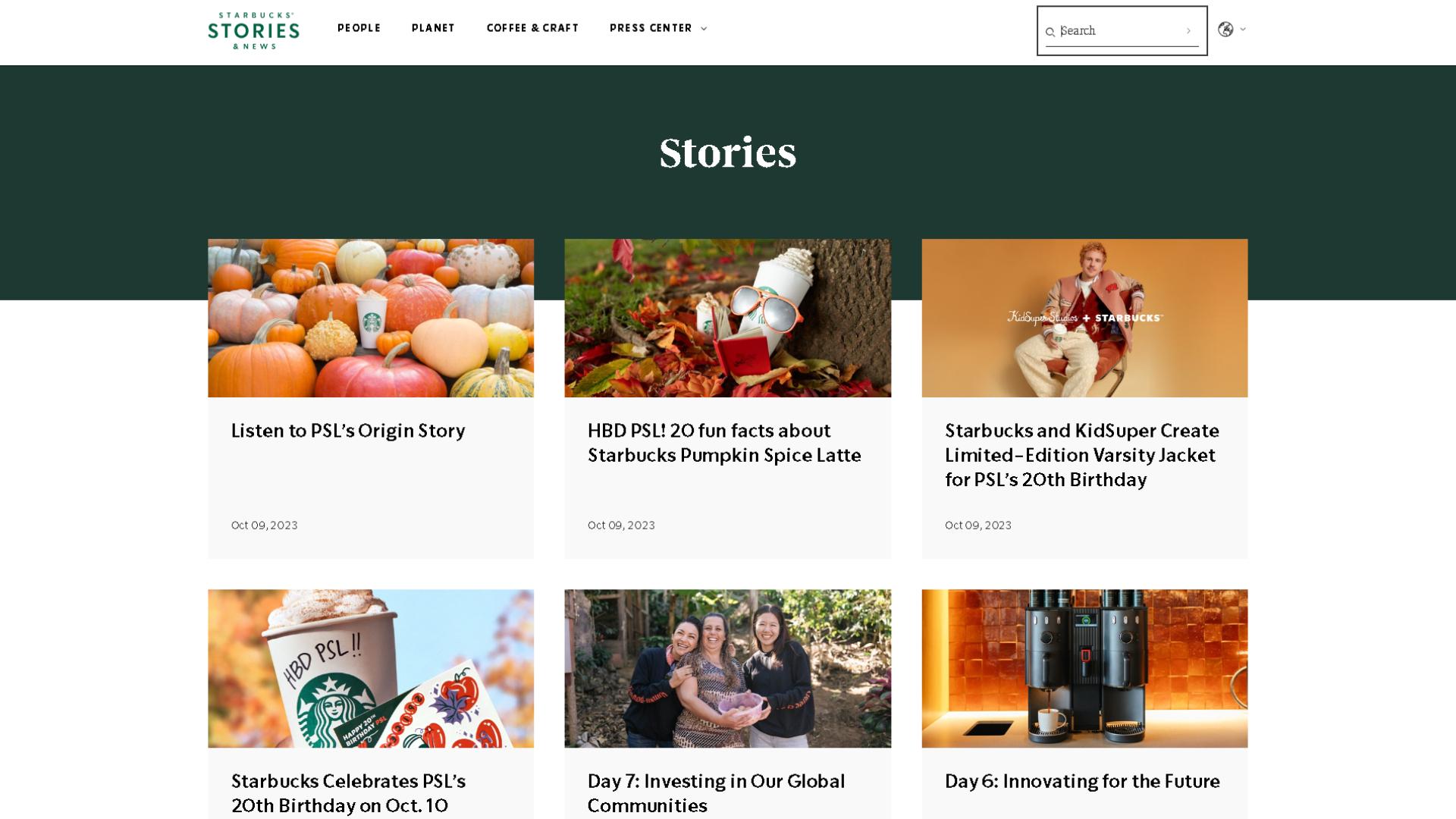
Starbucks uses content marketing to connect with its customers on a deeper level. The company's blog, called "Starbucks Stories," features articles on a variety of topics, including:
- Coffee and tea culture
- Sustainability and social responsibility
- The arts and culture
- Customer stories
- Company stories and uplifting posts
- Merchandising posts
- And much more
Starbucks also uses social media to promote its blog content and to engage with its customers. This blog is a really good example of how you can use this tool for community building.
4. Subway
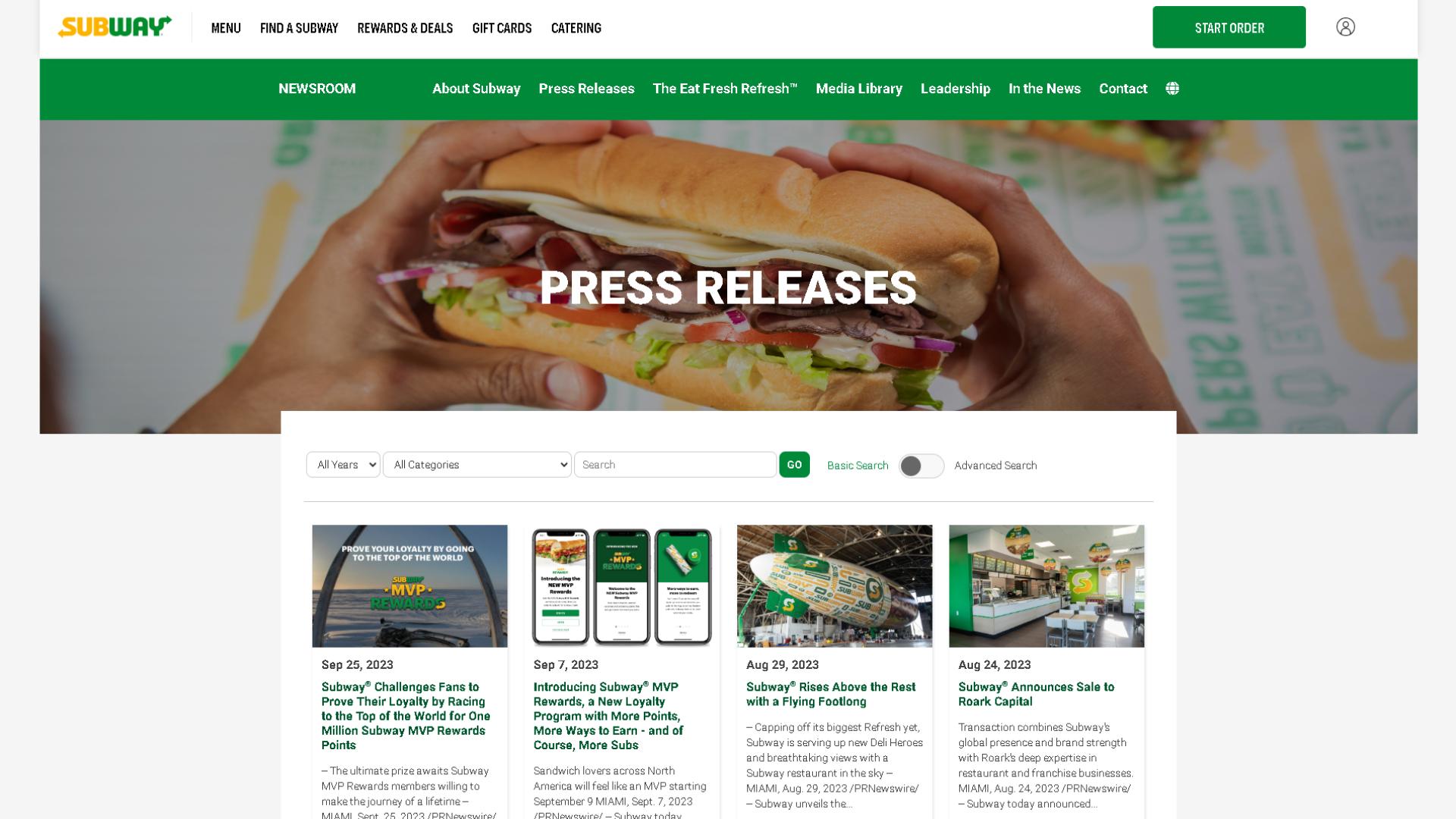
Subway is a little bit different because the company’s blog isn’t a blog, it’s a page dedicated to publishing press releases, but it works just like one from an SEO perspective. This newsroom is also a viable alternative to a blog because it allows you to expand your online presence, which can attract all kinds of people to your business, while also sharing some of the sweet SEO juice that makes your main page rank higher in SERPs.
5. Shake Shack
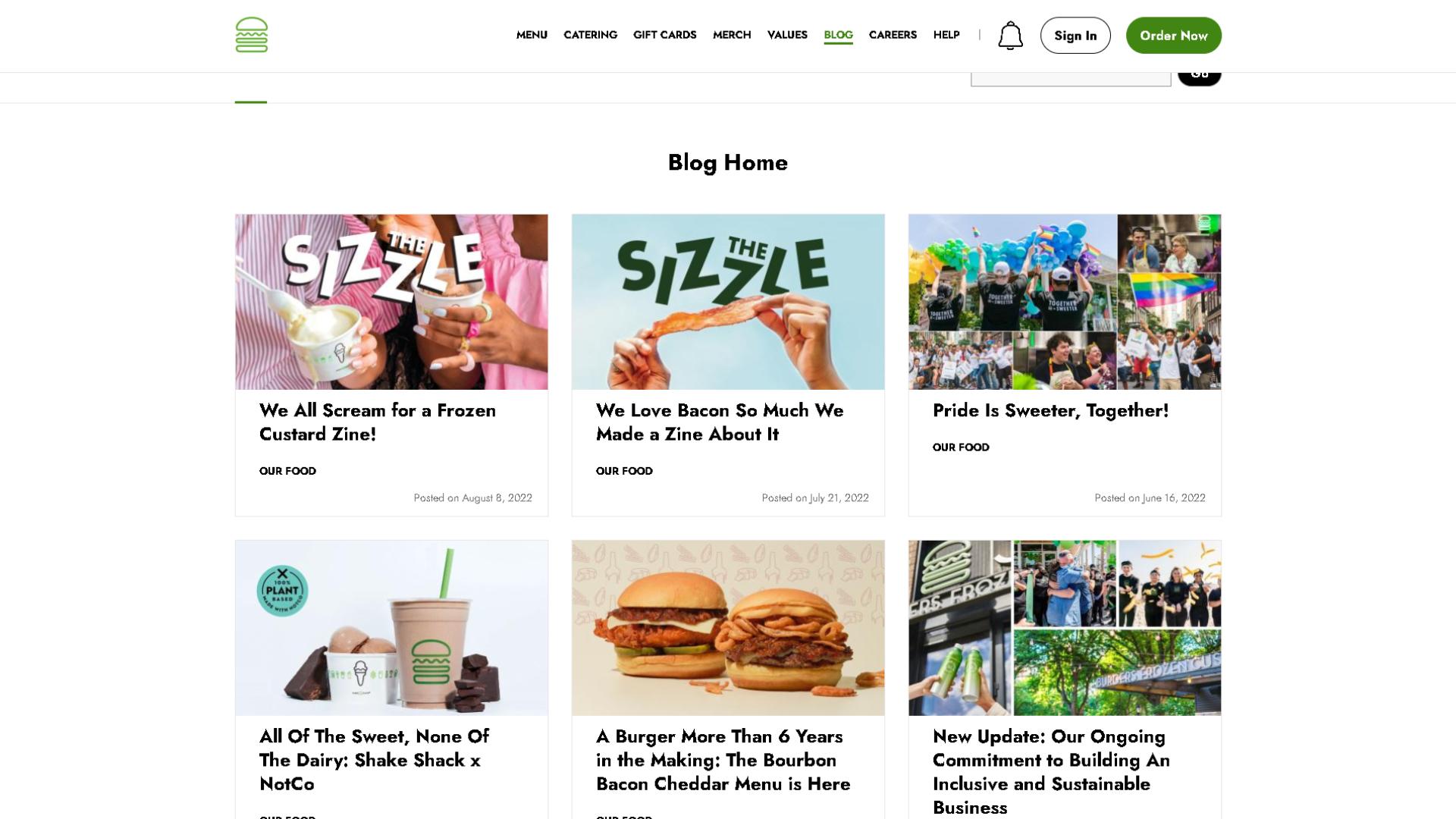
Shake Shack uses content marketing to tell its brand story and to connect with its customers on a personal level. The company's blog features articles on a variety of topics, including:
- Customer stories
- Blogs supporting the company’s community
- Sustainability and social responsibility posts
- And blogs about new additions to their menu
The interesting part about Shake Shack’s blog is their use of storytelling – each one of the blogs they post has an engaging and endearing story behind it.
These are just a few examples of restaurants using content marketing and blogs effectively. By creating and distributing valuable, relevant, and consistent content, restaurants can attract new customers, build relationships with their existing customers, and promote their products and services.
How to Start a Blog for Your Restaurant
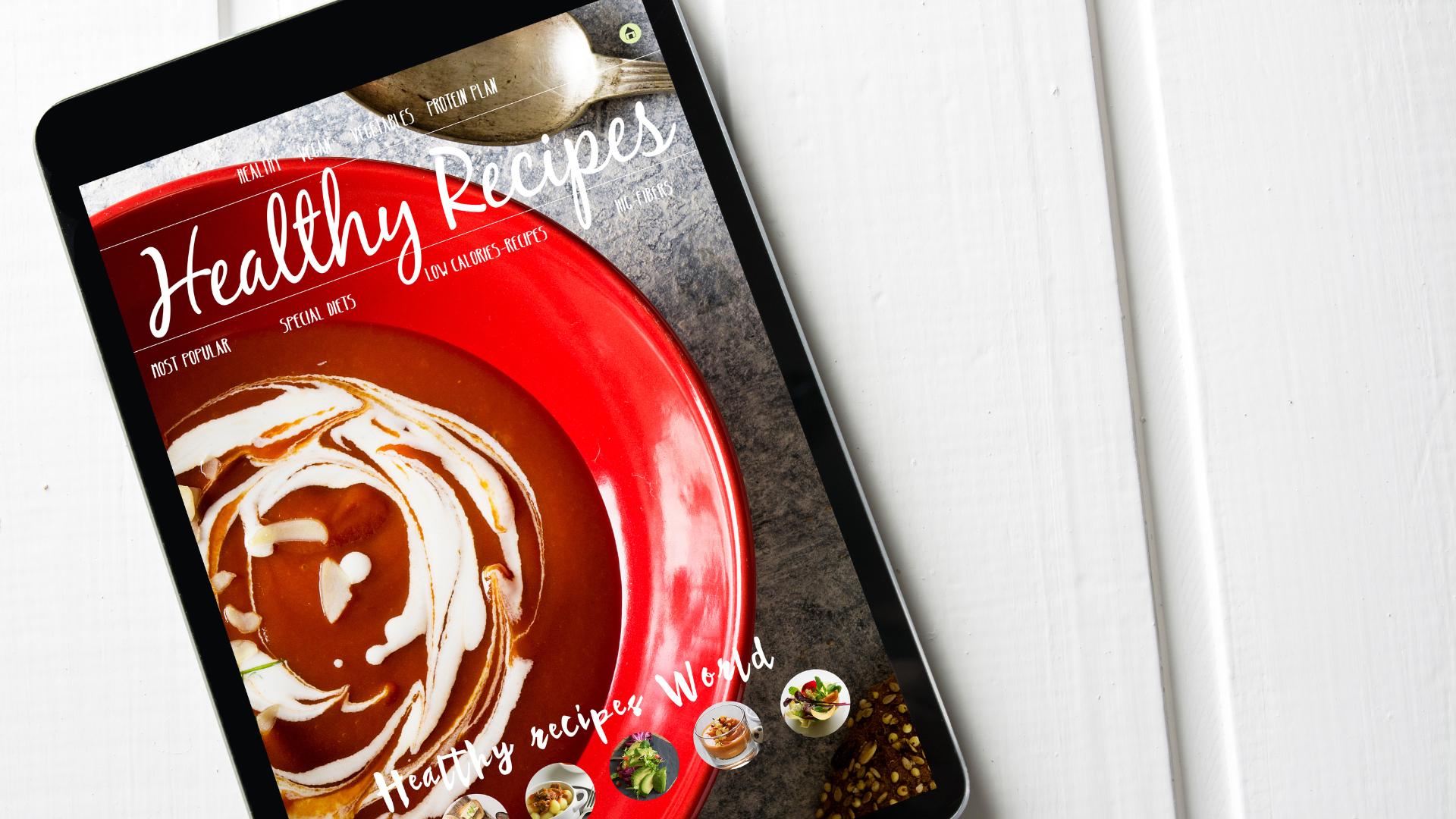
Now, let’s take a deeper look at the process we recommend you follow to create a highly successful blog. Even though this is a great tactic, for some businesses, it might not be worth the effort – this depends mostly on your target audience. With that in mind though, you must study your specific case because even though creating blogs might not be effective in traffic, it can still be an effective way of creating content that can later be repurposed to more effective channels. Even if this seems like an unnecessary extra step, the local SEO boost might be worth the trouble, especially if you have a website equipped with an online ordering system.
1. Determine if Creating a Blog for Your Restaurant Will Be Beneficial

Creating a blog for your restaurant's website can be a great way to attract new customers, build brand awareness, and drive sales. However, it's important to first determine if creating a blog is right for your business and if you're willing to put in the effort to create high-quality content regularly. Here are a few steps you can follow to verify if creating a blog for your restaurant's website would be worth the effort:
- Consider your target audience. What kind of content are they interested in? What are their needs and pain points? Once you understand your target audience, you can start thinking about what kind of blog posts would be most relevant and engaging to them.
- Think about your goals. What do you hope to achieve with your blog? Are you looking to increase website traffic, generate leads, or build brand awareness? Once you know your goals, you can start to develop a content strategy that will help you achieve them.
- Research the competition. Are other restaurants in your area blogging? If so, what kind of content are they publishing? How often are they posting? You can also check their websites using paid SEO tools such as Ahrefs or SEMrush. This information can help you identify opportunities to differentiate your blog and stand out from the competition.
- Assess your resources. Do you have the time and resources to create and maintain a blog? Creating high-quality content takes time and effort. If you're not able to commit to publishing new blog posts regularly, then creating a blog may not be the best use of your time. Still, if you have a reasonable budget, you can hire a freelance writer using platforms like Upwork or Fiverr – just make sure to pick someone who will represent your company's values and tone with every post.
If you've considered all of the factors above and you're still unsure whether or not creating a blog is right for your restaurant, here are a few additional things to think about:
- Can you produce high-quality content? Your blog posts should be well-written, informative, and engaging.
- Do you have a plan for promoting your blog? Once you've published a blog post, you need to let people know about it. You can promote your blog on social media, in your email newsletter, and on your website. These are a few of the ways you can repurpose content.
- Are you willing to track your results? It's important to track your blog's traffic and engagement metrics so you can see what's working and what's not. This information can help you refine your content strategy and improve your results over time.
If you've answered yes to all of the questions above, then creating a blog for your restaurant's website is likely to be a beneficial investment. However, it's important to remember that blogging is a long-term strategy. It takes time to build an audience and see results. If you're not willing to commit to blogging for at least six months, then there may be better marketing strategies for your restaurant.
2. Establish the Goals You Want to Achieve by Creating a Blog for Your Restaurant

Before you start creating content for your restaurant blog, it's important to establish clear goals. What do you hope to achieve by blogging? Once you know your goals, you can develop a content strategy that will help you achieve them.
Here are some examples of goals that can be achieved with blogging as a tool:
- Increase website traffic. Blogging is a great way to attract new visitors to your website. If you have your restaurant’s menu, a reservation system, or an online ordering system, this can improve your sales as well. Also, you can redirect some of the traffic to your social media by publishing interesting content and food pictures.
- Generate leads. You can use your blog to generate leads by offering valuable content in exchange for people's contact information. For example, you could offer a free recipe book in exchange for an email address or a discount on the next meal in exchange for a phone number. This is especially useful if you already have some sort of local following or have focused on building a community before.
- Build brand awareness. Blogging is a great way to build brand awareness and create a positive association with your restaurant. You can do this by supporting good local causes or by hosting events, which you can publicize using your restaurant’s blog.
- Drive sales. You can use your blog to drive sales by promoting your restaurant's menu, special events, and promotions. These also pair perfectly with strategies like email marketing. Check out our guide on how to create an email marketing strategy for your restaurant.
These are just some of the most common goals you can achieve – you can think of more specific goals that will benefit your restaurant. Something to keep in mind during the process of establishing goals is that they should be S.M.A.R.T. goals. These are specific, measurable, achievable, relevant, and time-bound goals. Using this method helps you track your progress and see what's working and what's not.
3. Use the Right Tools to Create a Blog for Your Restaurant

There are a variety of tools available to help you create and manage a blog for your restaurant. Here is a brief overview of some of the most important tools you should consider using:
- SEO tools: There are several SEO tools available that can help you with tasks such as keyword research, competitive analysis, and on-page optimization. Some popular SEO tools include Google Search Console, SEMrush, and Ahrefs.
- Content creation tools: Content creation tools can help you create high-quality blog posts, images, and videos. Some popular content creation tools include Canva, Grammarly, and Hemingway Editor.
- Website or blogging tools: Some popular website or blogging tools include WordPress, Blogger, and Squarespace. If you want to keep a tight budget, you can use these tools for a smaller price tag that adapts to your needs. Additionally, you can pair them easily with tools like Waiterio’s free online ordering system. Learn more about Waiterio here!
- Social media management tools: Some popular social media management tools include Hootsuite, Buffer, and Sprout Social.
Other tools can be helpful for restaurant bloggers, such as email marketing tools, analytics tools, and project management tools.
4. Come Up With Blog or Article Ideas

Come up with blog or article ideas for your restaurant's blog
One of the most important aspects of creating a successful restaurant blog is coming up with blog or article ideas that are relevant to your target audience and will help you achieve your goals. Here are some common ideas used for restaurant blogs:
- Recipes: People love to try new recipes, so sharing recipes on your blog is a great way to attract and engage readers. You can share recipes for signature dishes, seasonal dishes, or even simple dishes that people can make at home. The truth though, is that most people won’t make them, or will fail when they try. Eventually, they will come back to your restaurant for the safest bet.
- Restaurant news and announcements: Use your blog to share news and announcements about your restaurant, such as new menu items, special events, and promotions.
- Food and beverage trends: Write blog posts about the latest food and beverage trends.
- Tips and advice for diners: Share tips and advice for diners on topics such as how to choose a wine, how to order at a restaurant, and how to dine out on a budget.
- Behind-the-scenes content: Give readers a behind-the-scenes look at your restaurant by writing blog posts about your kitchen, your staff, and your food vendors. This is a great way to connect with your audience on a personal level and to build brand loyalty.
In addition to these common ideas, there are many other ways to come up with blog or article ideas for your restaurant. Here are a few tips:
- Think about your target audience. Once you have a good understanding of your target audience, you can start to think about what kind of blog posts would be most relevant and engaging to them.
- Brainstorm with your staff. Your staff is a great resource for blog post ideas. They can tell you about what customers are asking about, what's popular on the menu, and what's happening behind the scenes.
- Follow other food and restaurant blogs. Read other food and restaurant blogs to see what kind of content they're publishing.
- Repurpose content from your social media by creating blogs about them. Even big chains like Wendy’s apply this strategy.
Once you have a list of blog post ideas, you can start to prioritize them and develop a content calendar. This will help you stay organized and ensure that you're publishing new content regularly.
5. Start Applying the Content Marketing Strategy

This step is not as simple as it seems – you’ll have to prepare some social media posts, use high-quality content and keywords, and much more. If you want to improve your results, you should stick to the following SEO basics first:
- Choose the right keywords. When writing blog posts, choose keywords that are relevant to your target audience and that people are likely to search for.
- Optimize your title and meta descriptions. Make sure your title is clear, concise, and informative, and that your meta description includes your target keywords.
- Write high-quality content. Google and other search engines favor websites that publish high-quality content.
- Use images and videos. Images and videos can make your blog posts more visually appealing and engaging, and they can also help to improve your restaurant’s SEO ranking.
- Build backlinks. Backlinks are links from other websites to your own. Backlinks are one of the most important factors that Google considers when ranking websites in search results. You can build backlinks by guest blogging, submitting your website to directories, and outreach to other bloggers and website owners.
- Make sure your website is mobile-friendly. More and more people are using their smartphones and tablets to browse the internet.
- Improve your website's loading speed. A slow-loading website can frustrate visitors and lead to a high bounce rate.
- Promote your blog posts on social media. Social media is a great way to promote your blog posts and reach a wider audience.
If you’re not willing to apply these concepts but want to try this strategy in the most effective way possible, you should hire professional freelancers from platforms like Upwork or Fiverr. You will need a web developer or WordPress web designer, a content writer, and an SEO expert or consultant. If it sounds intimidating or expensive, keep in mind you can find the right person for the job or the budget. Finally, you’ll want someone who can take care of measuring the results of your strategy by using tools such as Google’s Search Console, SEMrush, and Ahrefs. That can help you ensure this strategy is worth the investment – just make sure you give it enough time!
Blogging Is an Effective Form of Content Marketing for Restaurants
Blogging is a very effective form of content marketing for restaurants because it allows you to attract new customers, build brand awareness, drive sales, and even support other marketing strategies. However, it's important to remember that blogging is a long-term strategy. It takes time to build an audience and see results. On average, it takes 2-4 years for a blog to be successful – it can take less if you apply the techniques mentioned here. If you're willing to put in the time and effort, blogging can be a very rewarding way to market your restaurant. You can even monetize it by creating merchandise if your customers would enjoy that. Are you willing to invest in a blog?

